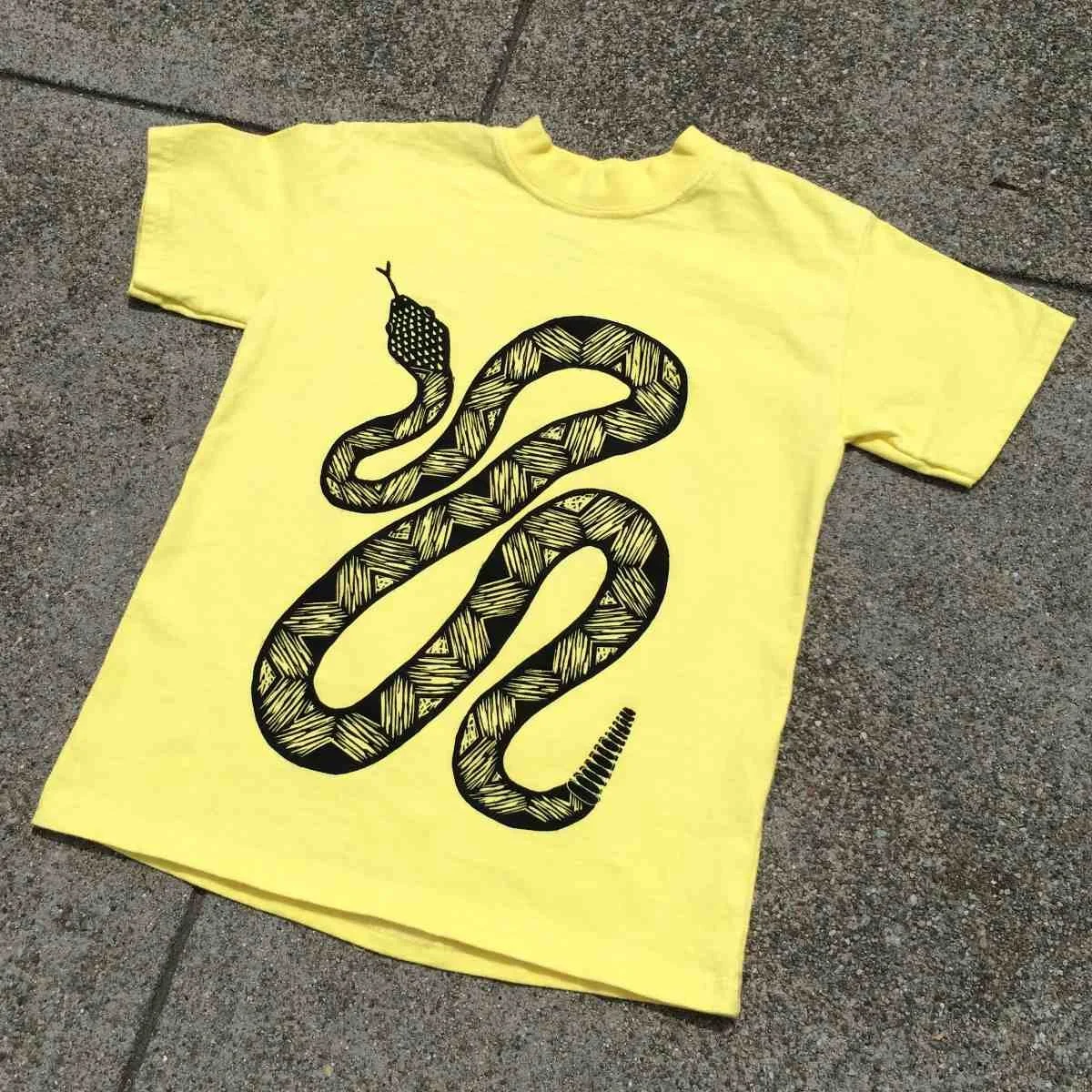Block Printing T-Shirts with a Linocut
One of the most common questions I get is how I print my linocuts on fabric, particularly t-shirts. I wrote a short blog post about making linoleum block print shirts a while ago but I wanted to expand on that and give a lot more details and tips.
People usually want to know where to get the supplies or want to read reviews so you'll find Blick and Amazon links. I would get a small commission if you end up buying something on these two sites, but please shop at your favorite local store if you prefer! You can find more details about this here. Though I'm a participatant in their affiliate programs, all the opinions, recommendations and testing below are my own.
Fabric Block Printing Ink
Okay, for fabric block printing you can go the relief or screen printing ink route. Lately, I've been mostly using Speedball's Fabric Block Printing Ink (like in the rattlesnake shirt pictured above) and Gamblin's Drive by Black Textile Ink much less so. Both are oil-based and washable when dry.
Oil-based inks have worked the best for the majority of my applications and I tend to get the crispest and most consistent impressions with them. My recommendations for textile inks are based on a big review of the best and worst block printing inks for fabric that I did.
Many people use screen-printing textile inks for block printing and there are lots to choose from including Speedball, Jacquard, Versatex, Permaset (really not a big fan!) and Blick. They're generally water-based inks but washable after heat setting. These are not my favorite type of inks, but of the group, I think that Speedball is the best. If you do give screen printing inks a try I've found that foam brayers can improve the results, as can letting the ink sit on the glass slab for a few minutes to dry (and thicken) a little.
Linoleum and Soft Carving Blocks
In terms of blocks for carving, I use battleship gray linoleum, purchased in large sheets that I then cut down to size. Sometimes I glue and mount them to sheets of plywood. This type of linoleum works particularly well with presses.
If you're printing by hand, some people prefer the soft, easy to carve blocks like Speedball's Speedy-Carve. I compare Speedy-Carve, Speedy-Cut and Blick E-Z-Cut printing blocks in my stamp carving tutorial.
Linocut Videos - Block Print T-Shirts
Here I show the process of printing on fabric - making a block print t-shirt with a linocut using a Blick 999 Model II Etching Press. I'm using my print titled, "Adventure Awaits," and printing on a 100% cotton t-shirt with the Gamblin ink I mentioned above.
Printing a Linocut T-Shirt
I have quite a few short printmaking videos on Instagram, too. Here's a quick one printing an anglerfish t-shirt and another one of a block printed dragonfly t-shirt.
Techniques for Lino Printing on Fabric
Here are some techniques to keep in mind when block printing on a t-shirt or fabric:
Ink the block with a slightly thicker layer of ink than you would if printing on paper.
Do not expect white ink to be opaque enough to print brightly on dark t-shirts. It will likely look a little gray.
Print it a couple times on paper first to 'prime' the block.
Put a thin press blanket or lay a flat piece of old fabric underneath the t-shirt.
Pre-wash the t-shirt or fabric you're printing on.
Put some paper inside the t-shirt or under your fabric in case the ink bleeds through.
The inked lino block gets put facedown on the t-shirt. Mark where you want to place the block on the fabric with blue painters tape.
When I'm printing pretty big blocks, I use my etching press to print rather than hand printing. If you don't have access to a press, exert as much pressure as you can down on the block with your hands, baren or even a rolling pin.
While the manufacturers of the oil-based inks say that heat setting is not necessary, I hang the printed t-shirt to dry and then heat set in a dryer on hot for 20 minutes. The water-based inks generally must be heat set prior to washing - usually done by ironing.
Last Updated: February 8, 2024

